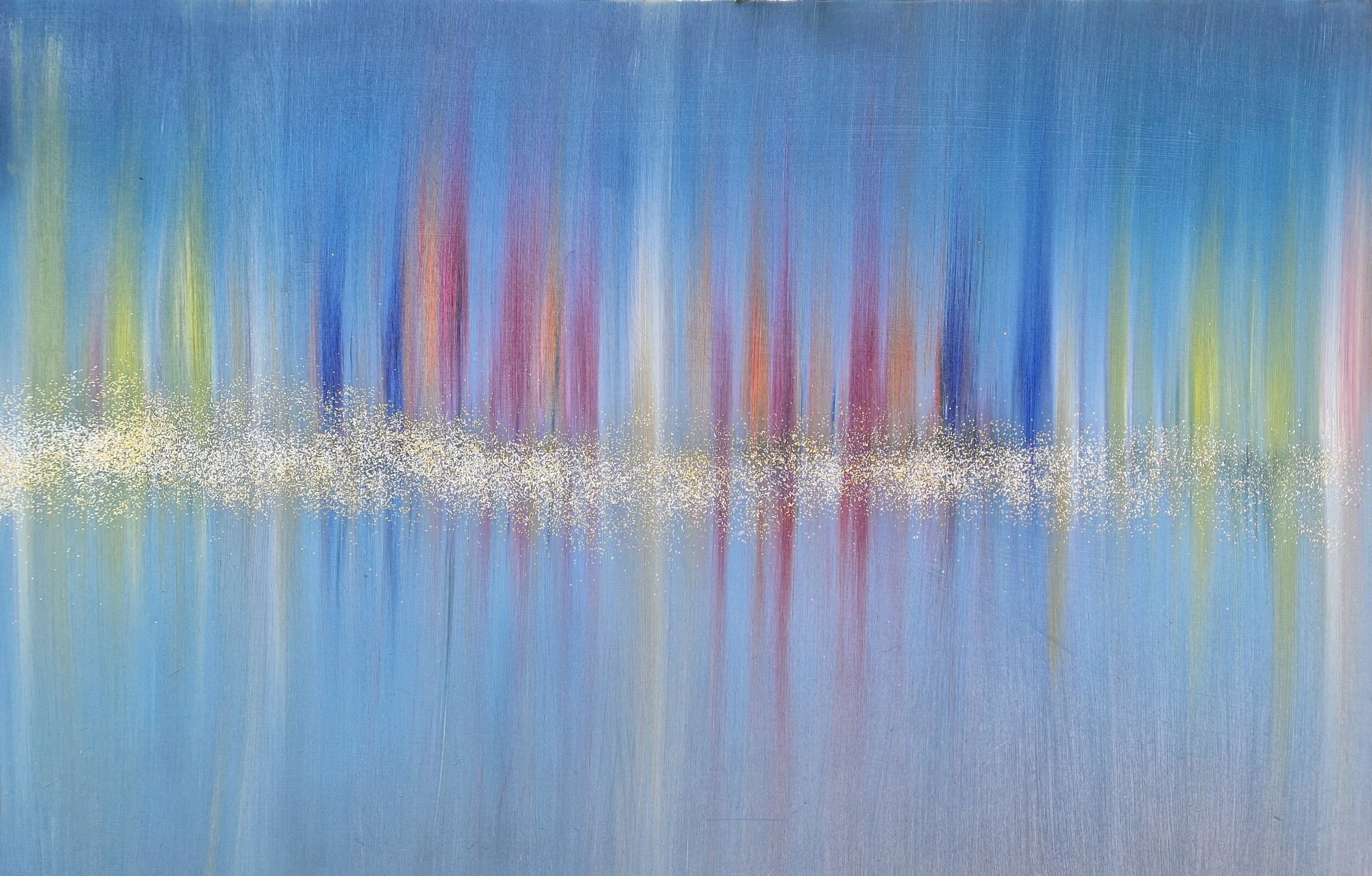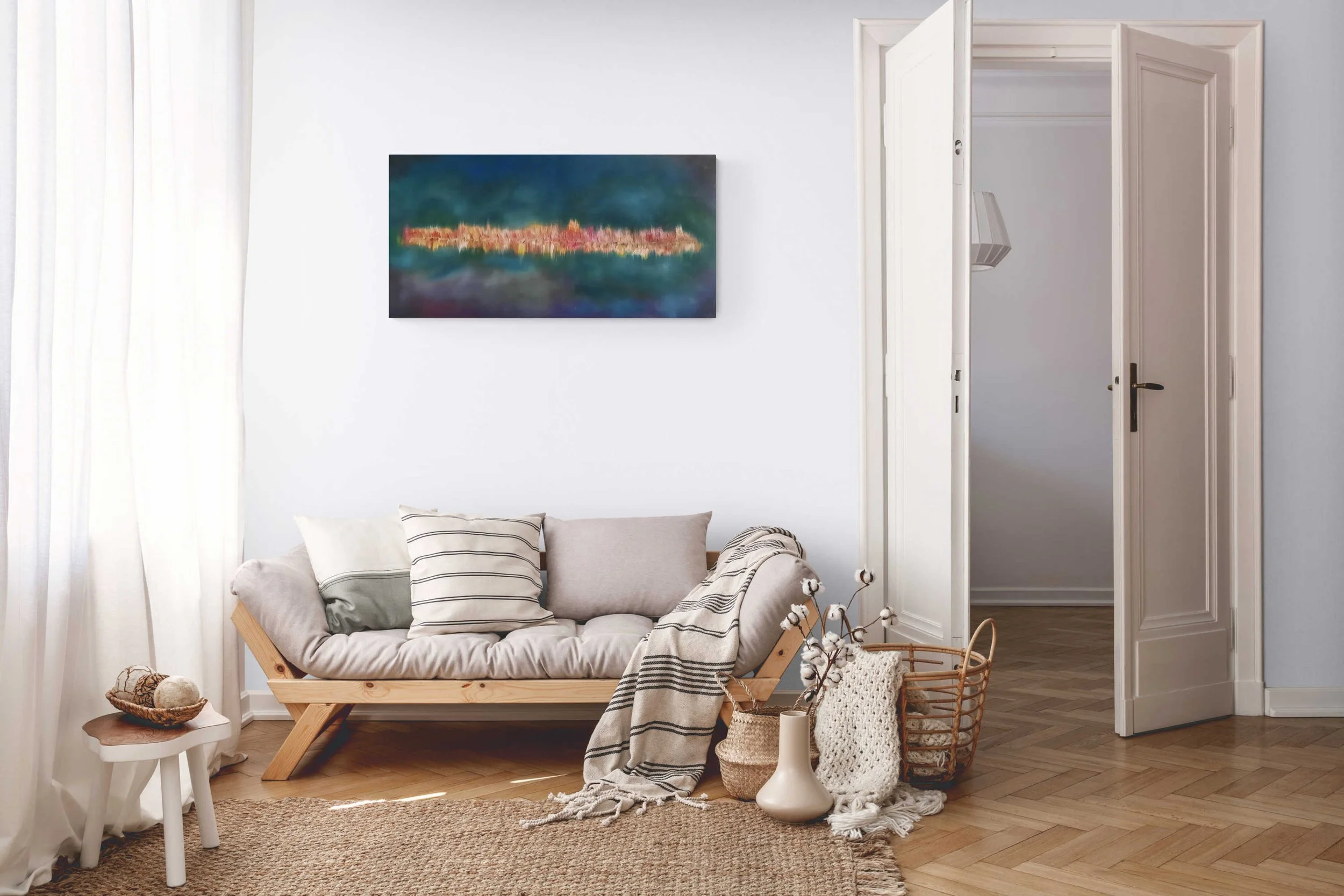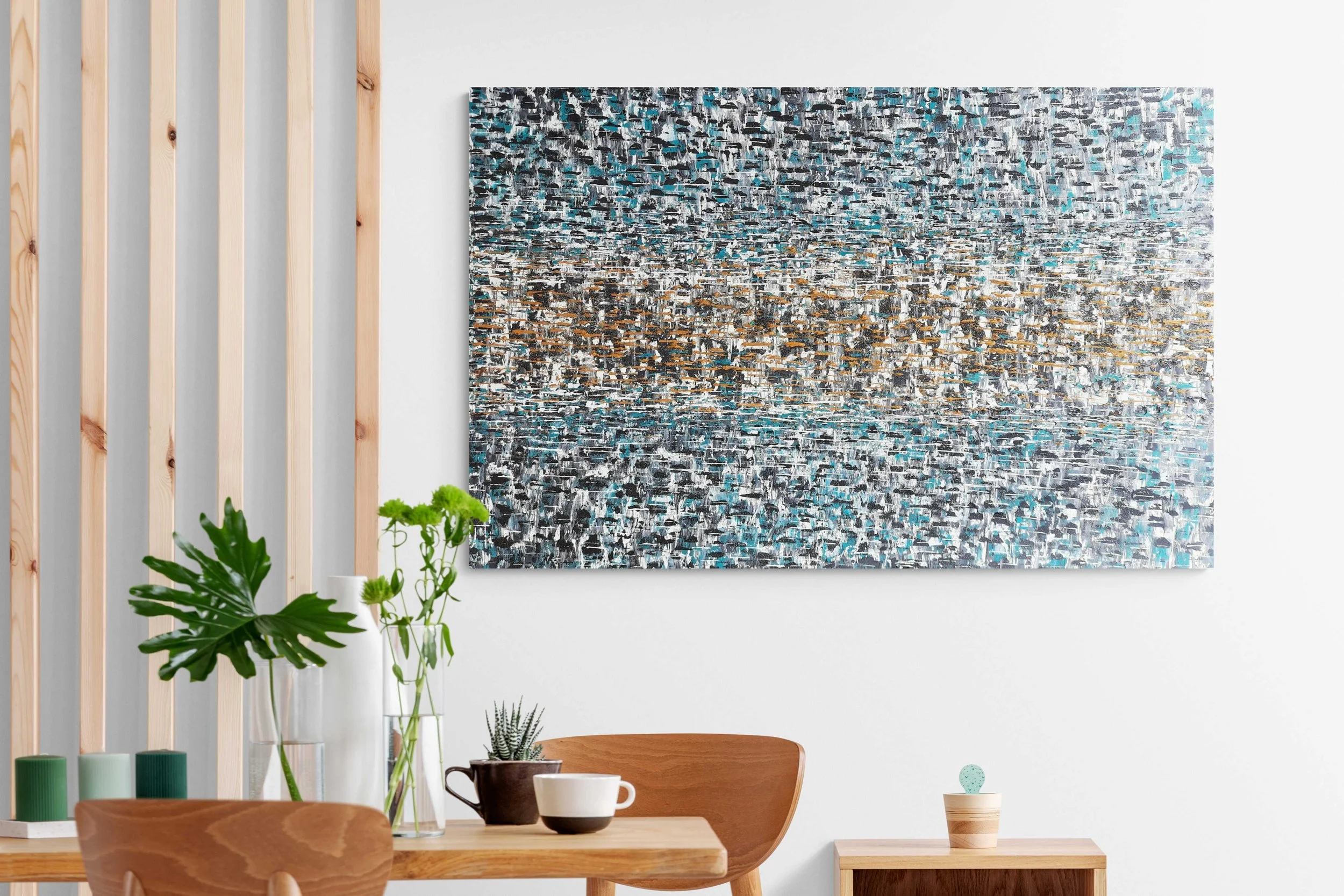How to Choose the Right Artwork for Your Home
I believe that art has the power to transform and enhance the ambience of any living space. In this post, '’ll guide you through the process of choosing the perfect artwork for your home. Discover how to find pieces that resonate with your personal style and create a harmonious environment that truly reflects who you are.
Introduction
Welcome to my blog! I believe that art has the power to transform and enhance the ambience of any living space. In this post, '’ll guide you through the process of choosing the perfect artwork for your home. Discover how to find pieces that resonate with your personal style and create a harmonious environment that truly reflects who you are. If you have any questions or need personalized advice, don't hesitate to reach out to me. I’m here to help!
Understanding Personal Style
Your personal style is unique, and art should reflect that. Take some time to explore different art styles, from abstract and contemporary to impressionistic or minimalistic. Visit local galleries, browse online art platforms, and immerse yourself in various artistic expressions. Pay attention to what captures your attention and stirs emotions within you. Do you find yourself drawn to bold and vibrant colours, or do you prefer softer, more muted tones? Are you captivated by intricate details or more intrigued by simplicity? Understanding your personal style will help you curate a collection that speaks to your heart.
Consider the Space
When choosing artwork for your home, it's essential to consider the space in which it will be displayed. Analyze the available wall space and take note of the dimensions. In larger rooms, bold and statement pieces can make a powerful impact, while smaller spaces may benefit from smaller or medium-sized artworks. Experiment with different orientations, such as horizontal, vertical, or square, to find the best fit for each room. For example, a tall and narrow wall may benefit from a vertical piece that emphasizes the height, while a wide and spacious wall could accommodate a larger horizontal artwork that creates a focal point. Consider the overall layout of the room and how the artwork will interact with other elements. By carefully considering the space, you can choose artwork that not only fits well but also enhances the overall aesthetic and atmosphere of the room.
Harmonizing Colors and Themes
Add abstract art by Roy P. Awbery to your home decor.
Colours have the power to create a harmonious and visually pleasing environment. When selecting artwork, consider the existing color scheme of your space, including the walls, furniture, and decor. Choose artwork that complements or introduces new colors to enhance the overall ambiance. For instance, if your space features warm earth tones, consider artwork with complementary colors like blues or greens to create an intriguing contrast. Additionally, align the themes and subject matter of the artwork with the overall theme or vibe of the room. If you have a coastal-themed living room, artwork depicting seascapes or beach scenes can bring a sense of serenity and connection to the space. Pose questions to yourself: How can the colors and themes of the artwork enhance the atmosphere you want to create? What emotions or feelings do you want the artwork to evoke? By carefully considering the colors and themes, you can curate a collection that not only looks visually stunning but also resonates with the overall ambiance and personality of your home.
Finding the Right Balance
Integrating artwork into your space requires finding the right balance. Consider the interplay between artwork, furniture, and other decor elements. Create a focal point by placing a captivating piece in a prominent position, such as above a fireplace or at the centre of a gallery wall. Allow the artwork to guide the arrangement of other decorative items, ensuring a harmonious and visually pleasing composition. Experiment with different arrangements and groupings to find the perfect balance that highlights both the individual artwork and the overall aesthetic of the room. Take a moment to step back and assess the visual balance—does the artwork draw your eye in without overwhelming the other elements in the space? Remember that balance doesn't necessarily mean symmetry; it can be achieved through the careful placement of different elements to create visual harmony. Challenge yourself to think creatively: How can you arrange the artwork to create an interesting flow? What other elements in the room can complement and enhance the presence of the artwork? By finding the right balance, you can create a space that feels cohesive, visually engaging, and inviting.
Exploring Artistic Mediums
Artistic mediums offer unique qualities and visual effects that can significantly impact the atmosphere of a room. Paintings, prints, sculptures, and photography each bring a distinct character to a space. Explore different mediums and experiment with textures, materials, and finishes to add depth and variety to your collection. Consider the impact of a large-scale abstract painting, the intricate details of a handcrafted sculpture, or the captivating storytelling of a photographic print. Each medium carries its own expressive power and can evoke different emotions and moods. Pose questions to yourself: How do you want the artwork to interact with the surrounding space? Do you want a three-dimensional piece that adds depth and dimension, or a two-dimensional artwork that adds a splash of color and texture? By exploring different artistic mediums, you can find the perfect combination that resonates with your personal style and elevates the visual appeal of your home.
Seeking Authenticity and Meaning
When choosing artwork for your home, seek pieces that hold authenticity and meaning. Investing in authentic artwork or limited-edition prints adds value and significance to your collection. These pieces not only reflect your unique style but also support artists and their creative journeys. Take the time to connect with artwork that resonates with you on a deeper level, evoking emotions and telling stories that align with your personal narrative. Challenge yourself to think beyond mere aesthetics and consider the deeper meaning behind each piece. Does the artwork evoke memories or experiences? Does it convey a specific message or evoke certain emotions? By seeking authenticity and meaning, your collection becomes more than just decorative pieces—it becomes a reflection of your values, passions, and personal journey.
Conclusion
Choosing the perfect artwork for your home is an exciting and fulfilling endeavour. By understanding your personal style, considering the space, harmonizing colours and themes, finding the right balance, exploring artistic mediums, and seeking authenticity and meaning, you'll curate a collection that reflects your individuality and enhances the atmosphere of your living spaces. Let your home become a gallery of your own, filled with art that brings joy, inspiration, and meaning to your everyday life. If you have any questions or need personalized advice in choosing the perfect artwork for your home, feel free to reach out to us. We're here to help you create a space that truly represents who you are and resonates with your artistic vision. Happy art hunting!
ABSTRACT TEXTURED ARTWORK FOR THE HOME
Textured paintings can add a unique dimension to your home. Dynamic in nature, textured artwork will change its appearance as the light changes and create a dramatic and interesting focal point in any home.
Textured abstract artwork can create a high impact statement and great focal point
Art for your home, office or even home office space doesn’t have to be a large, grand and expensive painting but it should have an impact, After all, you only get one chance at a first impression so make it count. Textured abstract artwork could be the answer.
My latest series of abstract paintings on canvas come in a variety of sizes and not all of them are particularly large. In fact, we often forget the smaller rooms that are the first that guests see when they visit. For example, hallways and lobbies are often neglected when it comes to artwork and yet a small painting could have quite an impact and add a level of interest that was previously missing.
Textured artwork is unique
Textured artwork is less well known compared with the more traditional paintings featuring abstract designs. This means that if you look for something textured you can be quite sure that no one else is likely to have anything similar and certainly not the same.
I use a mixture of plaster of Paris, modelling pastes and PVA adhesive with my acrylic paints to create a range of different textures and each painting is therefore unique. The peaks and troughs that result can change a static painting into a dynamic artwork by the way the light changes as the day progresses.
Textured abstract art as a styling aid
Textured artwork is just as versatile as any abstraact painting and the diversity of colours mean that a painting can be found to meet any decorating idea or design intent. Even subtle textures can bring a painting to life without overpowering it. In these examples silver paint has been added with texturing agents to ensure the silver dots leap off the painting.
Lighting can change a textured painting
All paintings will look different under different lighting conditions. Indoor lights tend to lend an orange or green hue to paintings and can therefore mute some colours. Lighting from a window is natural and comprises the whole spectrum of colours and can lead to paintings with primary colours really coming to life as the colours begin to really shine. Textured paintings are no different - they will also respond to changes in lighting but the effects can be more dramatic. Shadows become more noticeable and can really add a new dimension to your artwork.
Textured artwork is dynamic
If texture is used carefully and thoughtfully, an otherwise one-dimensional canvas can suddenly become 3-dimensional, vibrant and completely dynamic. Shadows will move if the sun is allowed to play on the surface of the canvas and if top or side lighting is used very different appearances can be achieved from the same painting.
Check out my latest series of textured abstract paintings or contact me to discuss an affordable commissioned painting.
How to choose art for your home
Every home will benefit from having some form of artwork displayed and paintings are especially good at adding character and personality. It is entirely possible to buy original artwork without breaking the bank and create a bespoke look in any or every room of your house. And the best bit, artworks are decor that you can move around, take with you when you move and they may even increase in value over time. So how do you choose the right artwork for your home? Here I offer my suggestions on what to think about for various rooms in your home.
Every home will benefit from having some form of artwork displayed and paintings are especially good at adding character and personality. I find it frustrating when I see cheap posters or canvases, that one can buy in DIY stores, hung in people’s homes. These products do not really give a hint to the owner’s personality and are more often than not simply bought to fill a space. But, it doesn’t have to be that way. It is entirely possible to buy original artwork without breaking the bank and create a bespoke look in any or every room of your house. And the best bit, artworks are decor that you can move around, take with you when you move and they may even increase in value over time. So how do you choose the right artwork for your home? Here I offer my suggestions on what to think about for various rooms in your home. If I convince you that you need art in your life then consider visiting my website and taking a look at my very affordable paintings (and they are growing in value all the time!).
The Kitchen
The kitchen is often forgotten as a place to display artwork.
I’m going to start with the kitchen. Why? Because it seems to be the least favoured room in the house when it comes to artwork. At most, one might see a large vase and some flowers but these do not last long and I can imagine that there are many days when there are no flowers at all. But artwork, well that remains and can brighten up any kitchen, even the smallest.
There seems to be a trend these days with building developers to design houses that are not designed for cooking in. The kitchens seem to be an afterthought and are often very small. I’m beginning to believe that the developers have shares with Deliveroo or Just Eat and are encouraging home buyers to simply order takeaway dinners. The trend also seems to be towards very clean-looking kitchens with bare bright walls and similarly muted cabinets. Where has the colour and character gone? Well, all is not lost and abstract art can save the day.
Admittedly, abstract art might not be everyone’s cup of tea - it certainly wasn’t mine originally. In fact, once upon a time, my wife took me to the Tate Modern in London to look at abstract art and I lasted five minutes before walking straight out and headed for the natural history museum. Well, you know where you are with rock! But I digress. The point is that abstract are comes in many forms and there is almost certainly going to be something that would work for you and brighten up even the smallest space in your kitchen. And your choice of painting will tell a lot about you as an individual so your kitchen becomes more interesting. Back in the days when we could visit each other’s homes and have parties, wasn’t the epicentre always the kitchen? Now you’ll have a talking point if the conversation runs dry!
If you have limited space look for abstract paintings on stretched or box canvas (also known as gallery canvas). These do not need frames and can be hung just as they are so they are no-fuss solutions and look great.
The Bedroom
Bedrooms look great with calming landscapes or muted abstracts.
Bedrooms are supposed to be where you go to relax before eventually drifting off to sleep, so it makes sense to choose paintings that have a calming or soothing appearance. This is not the room for those loud and dynamic abstracts! If you have space, a large landscape-format painting hung above the headboard looks great as does placing artwork on the wall directly opposite the bed. Of course, with anything hung at the end of the bed you need to choose wisely - you are going to be seeing it every morning!
Seascape paintings can look great in bedrooms - the sea seems to have a very calming effect on the eye although I’d suggest you avoid the depictions of ships crashing onto rocks in a storm unless you find that relaxing. Cityscapes work well and especially those depicting nighttime with the soft glow of city lights. Abstract paintings also work well here but you really want to aim for more muted or desaturated colours. Abstract art is especially versatile here because you can pick out particular colours from your room or soft furnishings and help the painting fit with the overall theme.
Whereas small kitchens do not lend themselves to framed paintings, the bedroom is a great place for framed art. There are so many different types of frames available to suit every taste and budget and again, you can introduce something of your character in your choices with frames and mounts. There are some online companies that allow you to upload your painting as an image so you can see what it will look like in a particular frame. I use EasyFrame but there are probably many others you could use (I’m not paid to say that - they are just really good!).
The Living Room
The living room can be the most daunting room to place art - everyone will see it!
The living room is arguably one of the most difficult or intimidating rooms to decorate at the best of times and then I’m going to suggest that you add artwork to the challenge too. The living room is possibly the most exciting room to decorate with artwork too. I suggested at the start that introducing artwork into your home gives you a chance to show your character and personality and doing this in the living room puts it right out there, front and centre for everyone to see. What’s to be afraid of?
To be fair, other than the time you spend in the bedroom (and most of that is with your eyes closed in the dark) the living room, by definition is where you are likely to spend most of your time at home. As a starter for ten, I would suggest thinking of any artwork as a conversation piece. If the artwork is interesting or unusual it is bound to catch the eye and invoke a conversation, so please don’t pick up the first canvas poster you find in your local DIY store! Think about the setting or vibe you are trying to achieve with the room and choose something that fits in rather than stands out as if it shouldn’t be there (granted, that would be a talking point!).
If you are the outdoors type you might find a large and imposing landscape painting fits in and speaks to your wider interests. Equally, if you travel a great deal, for work or pleasure, old maps set in characterful frames and look great. I have an old map of Europe and Russia and the talking point arises when visitors see it because the countries are not all correct (by today’s geopolitics at least) and the seas have unusual names. In essence, anything really goes in a living room but try to think how a painting reflects something about you or your family.
The study or home office
The home office or study is where you can have some fun with your artwork. Go on, be bold!
With the pandemic forcing many people to work from home and many businesses now looking at new ways of working that may well include a mix of flexible working from home, the home office or study has taken on a new importance for many. To begin with, the home office or study was probably just a spare room or space at one end of the living room but more and more people are designing their spaces specifically for working in (I know I have) and it is important to get the look and feel of it right. But, there is also an opportunity here. In the traditional office setting, one couldn’t simply rock up with a painting and hang on the wall but at home well, it’s your house - your rules, and now is the opportunity to get creative.
As I have said before, your choice of artwork should reflect you as an individual and give an insight into who you are but we all have to limit ourselves to some extent. However, this is not necessarily the case with the home office or study. Largely, it is a dedicated space just for you so why not let go a little and get bold. Have you always loved those bold and aggressive abstracts? Do you find pictures of cute cats relaxing? Maybe you really like those bold semi-nude abstracts that seem to be so popular on Instagram right now (if you haven’t seen them check out Sophie Tea Art who now has a shop in London. I’ve often wondered where that sort of art would be placed and I think the study would be perfect). Whatever you choose is up to you,
If you are limited for space, or don’t wish to put nails in your walls or perhaps you can’t decide what paintings to hang you could try the floating art concept. Put simply, you just prop up your paintings on a mantle, shelf, or desk (whatever you have) and assemble your paintings along the length of your area and allow the paintings to overlap and sometimes stack in front of each other. This then becomes a very dynamic art gallery and you can simply move and swap paintings around whenever you want, so no getting bored of the same old scene. I actually do this in my home office (I have a lot of paintings!) and I find it relaxing to have something new to look at each day. Okay, I should be working and not worrying about what I’m looking at but once an artist…you get the idea!
So there you have it. I hope you’ve found this useful and do leave a comment and let me know, especially if there is another topic you’d like to see covered in a future post. Coming soon will be my argument as to why every home should have abstract art it, not that I’m biased of course!
Finally, if you’ve read this far then thanks - I really do appreciate it. Now go, there’s nothing more to be seen here!















